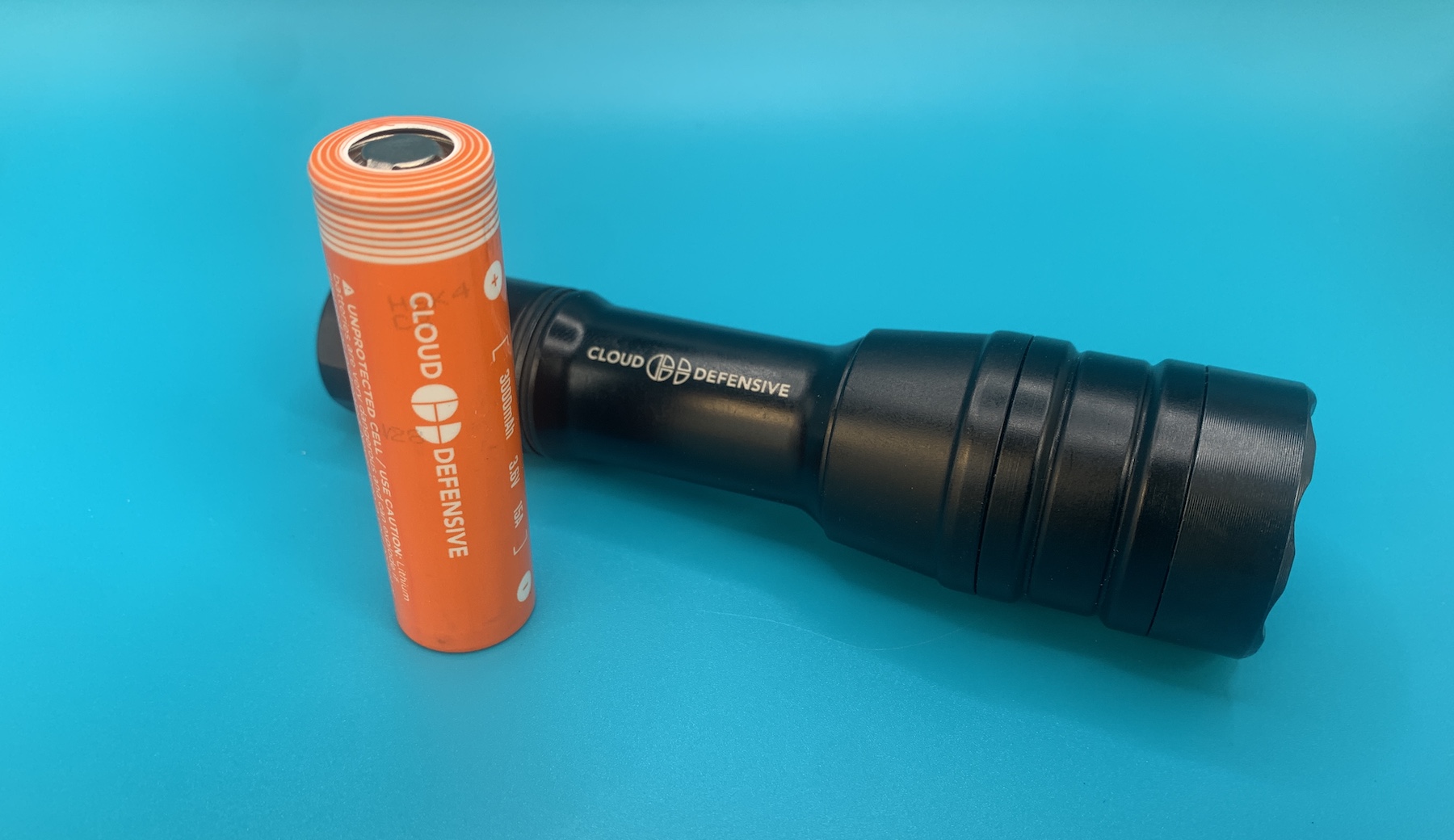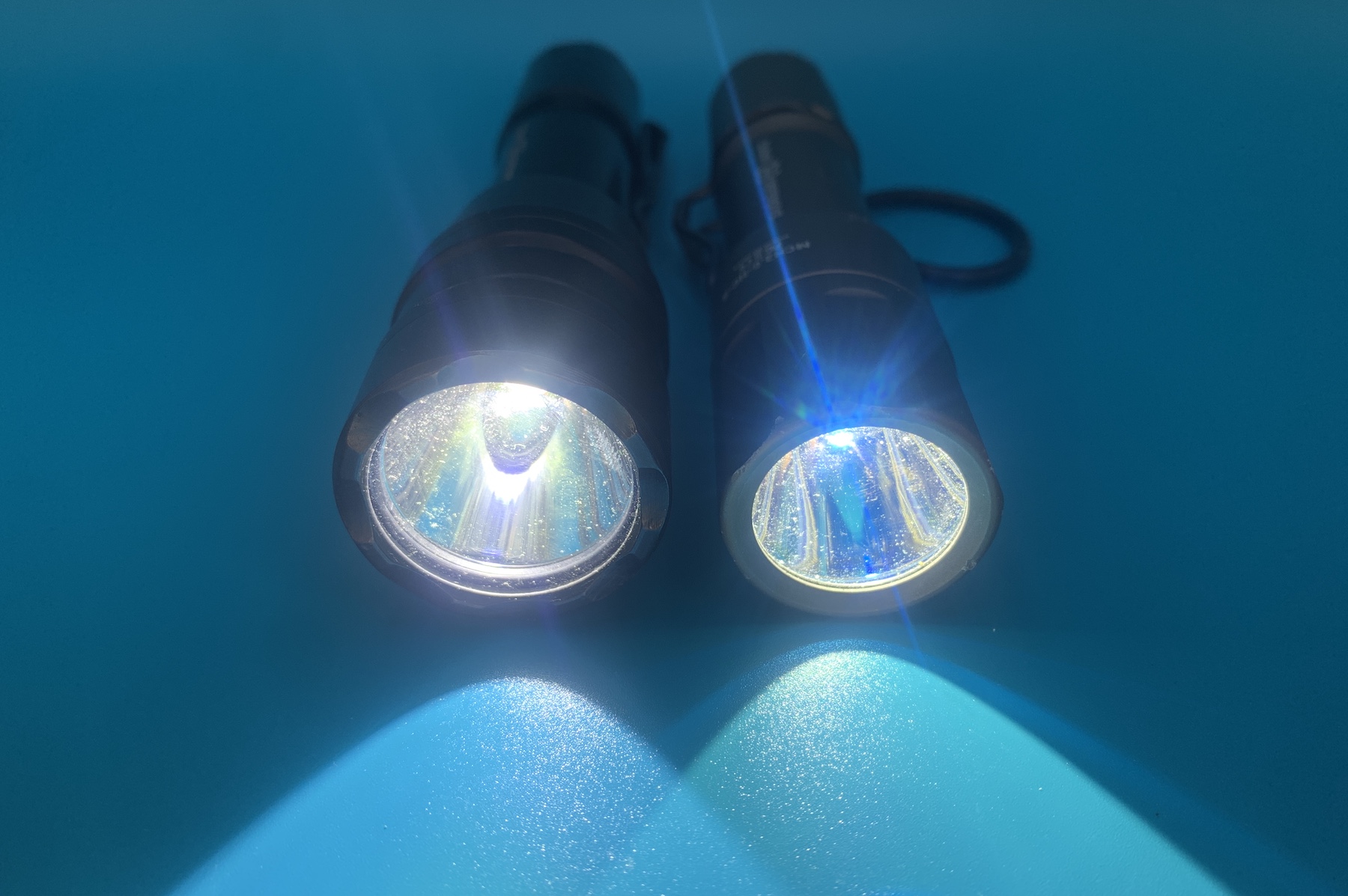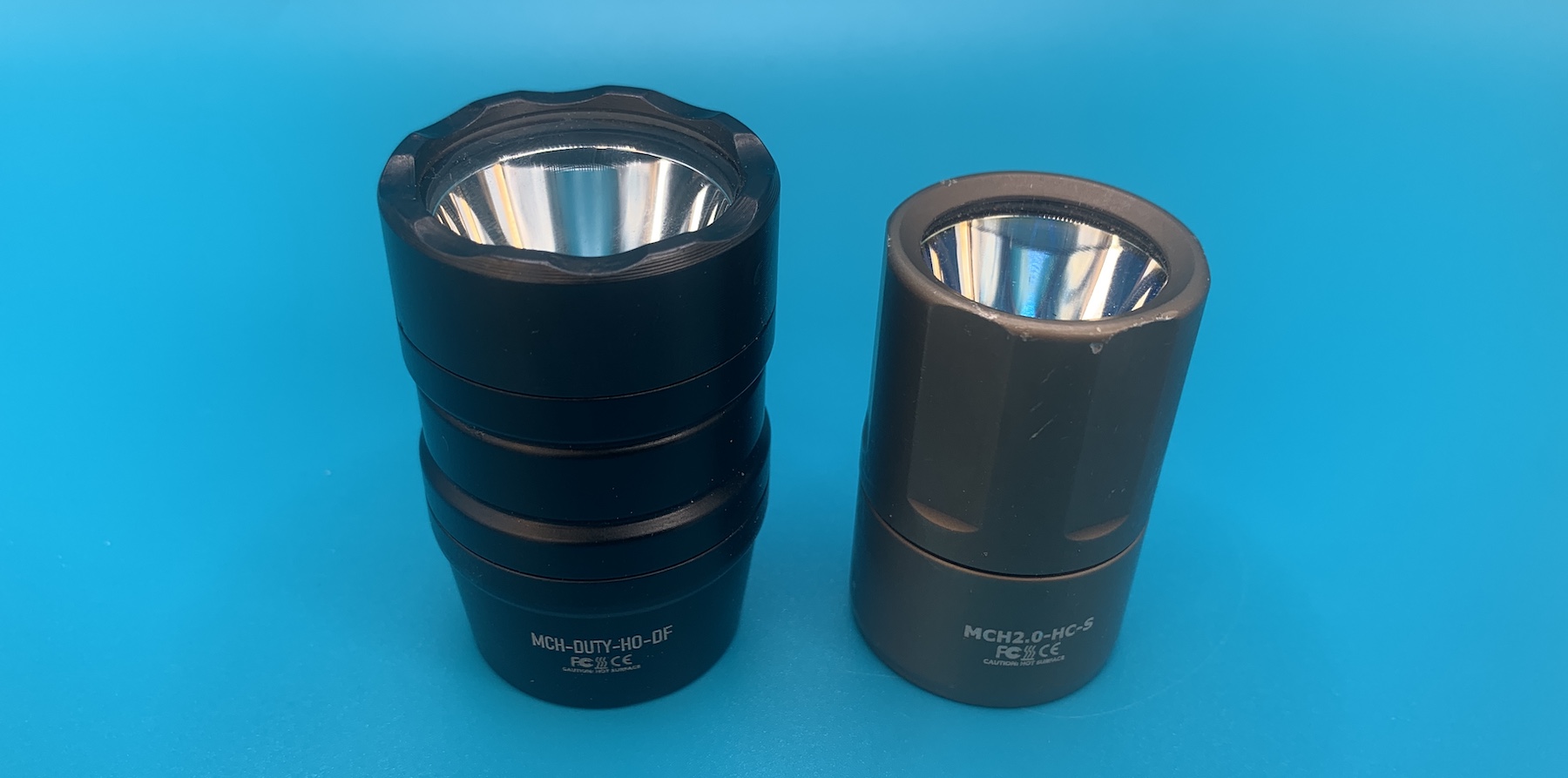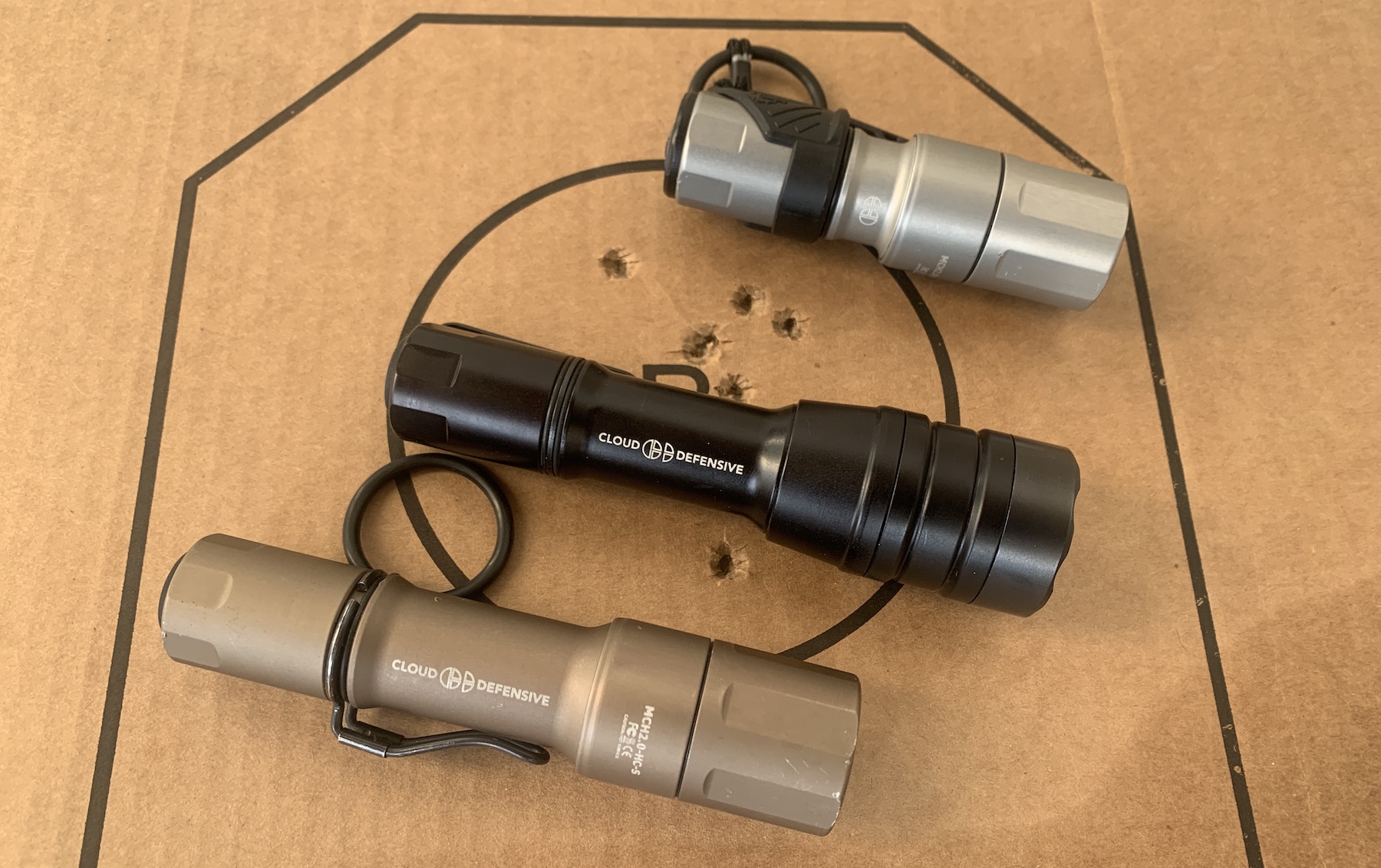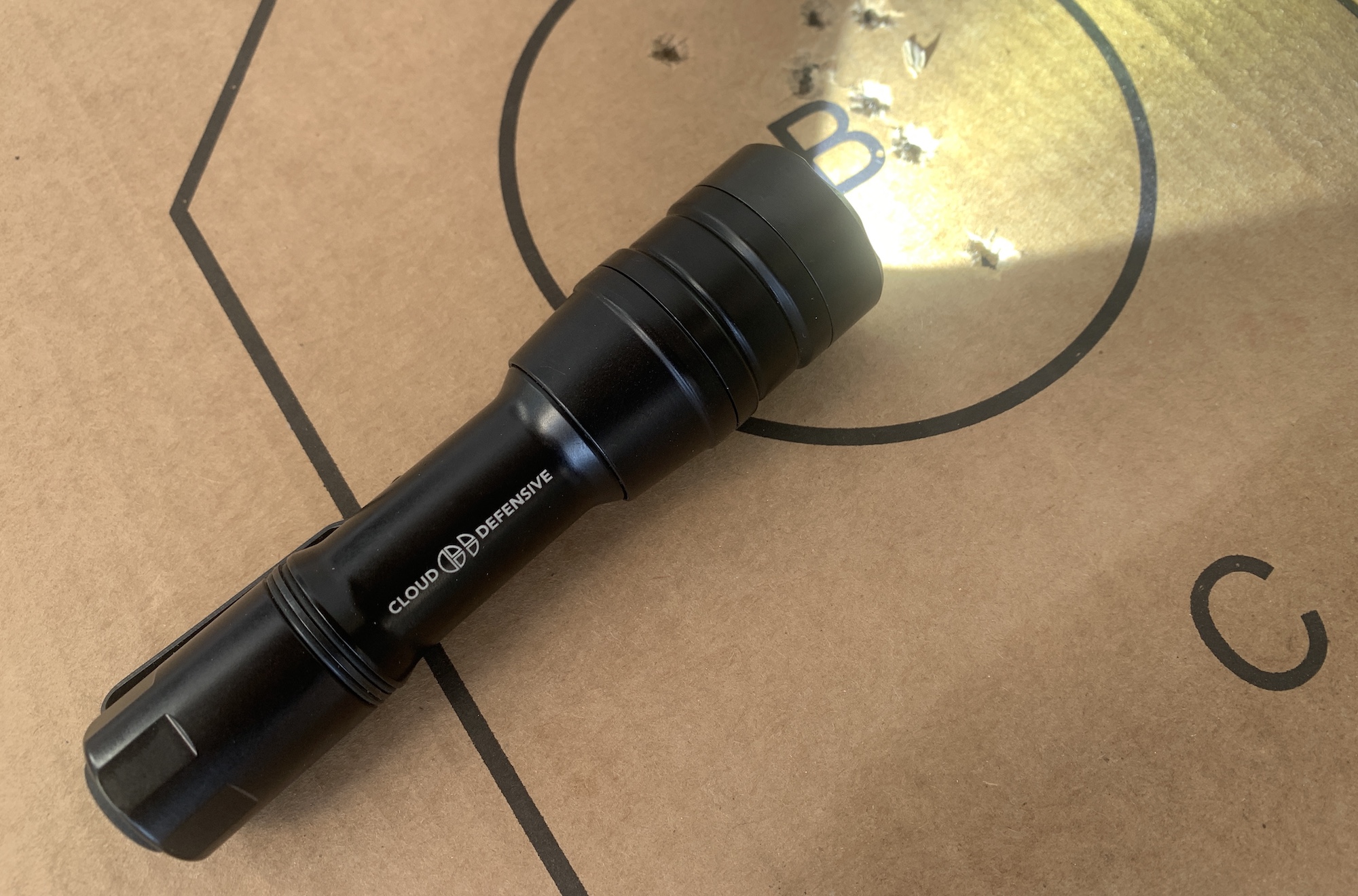
feature_8066
Cloud Defensive’s handheld lights have been out for a few years now. Their duty-centric flashlight, the Mission Configurable Handheld-Duty light (or MCH-Duty-HO-DF), hit the market a few months ago. Matt Jacques at Victory-First sent me the new handheld and a long-gun light for articles.
This light, the MCH-Duty-HO-DF, has a unique feature that makes it interesting. It has five different modes the end user can adjust. Having dealt with user-programmable lights in the past, I did not envision this being the light’s most interesting feature.
So, what are the light’s performance and use statistics?
Battery Power
The base setting, which is on high power, puts out 1,800 lumens and 50,000 candela. The light’s temperature, think light color, is 5000 kelvin – which is roughly the middle of the road color-wise. On full power, the light’s run time is 60 minutes. You can get 120 minutes and six hours of run time, respectively, by dropping to medium and then low power.
Lumens describes the amount of light that is radiated at a specific distance. On the other hand, Candela indicates the strength of the light’s emission. Regarding Kelvin, it is used here to describe how various light temperatures appear to the human eye – warmer temperatures appear yellow. In comparison, cooler temperatures are whiter in appearance.
The “DF” in the nomenclature stands for Dual Fuel. Meaning the light’s body can take both 18650 re-chargeable batteries and CR-123 lithium batteries. There is a cost when using the CR-123s; they have neither the output nor the longevity of the 18650 cells. Output with those CR123 cells will be 500 lumens and 20,000 candela – a noticeable reduction.
Like my other CD handhelds, you can unscrew either the bezel or the tail cap from the body to change the battery.
Environmental
If you are prone to dropping your light into waterways, it is rated to a depth of one hundred feet for 24 hours.
Programmable
User programming? As mentioned, I have not been a fan of lights that the end user can program. One of two things happens, from handling those lights myself or watching others use them: first, the programming does not seem to stick, I’ll expect X, and suddenly I’m getting K from the light when I really need X. Second, I see someone having to work buttons several times to get the feature they need when they need it – while the problem is still going on.
With this light, the user has the option of programming five modes: #1 is high out only, one hundred of the available light when the tail cap is depressed; #2 starts at low before going high (100%); #3 goes from high output (100%) down to low (10%); the fourth works from very low (5%) then medium (30%), before high (100%);. In contrast, the final mode works in reverse – High, Medium, and Very Low.
While I want my primary light to only run at full power (100%), there is no doubt in my mind that I cannot inadvertently change this light’s settings. That likely means no one else will have that happen to them, either.
Pocket Clips
There are a couple of ways to maintain physical control of this light. There is the Thyrm switchback and a metal clip. Thyrm’s Switchback and low-profile pocket clip will both work the Duty light. Cloud also developed a metal pocket clip that fits between the body and tail cap. All of these will aid in securing the light in a pocket or pouch. The only practical difference I have encountered is the method’s visual profile.
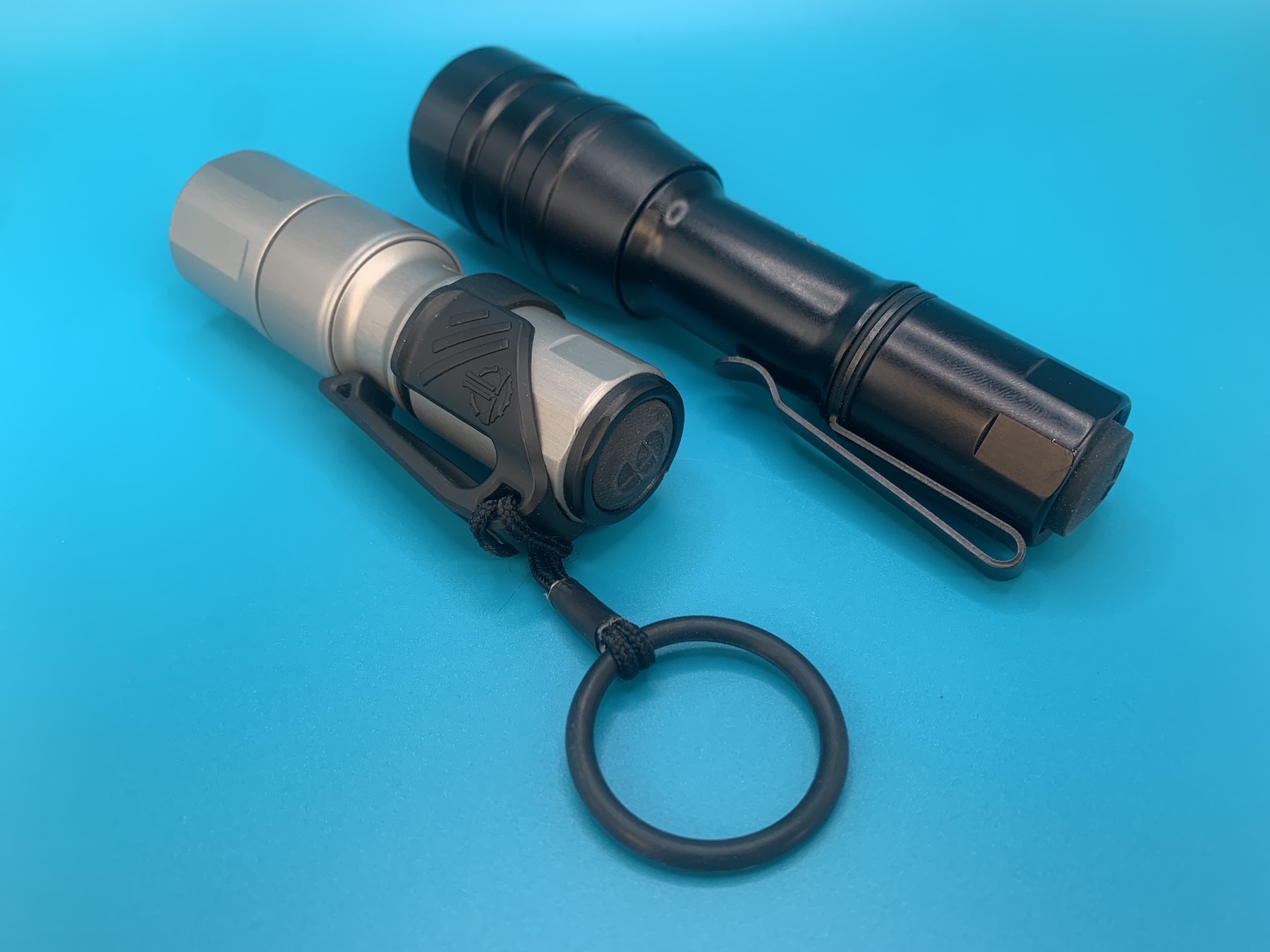
Pocket clips from both Thyrm and CD work with this light. You can see the ND preventer on the smaller light; as well as the Retention Ring.
Switch Protector
More than once, I’ve put a tail cap light in a pocket or pouch. Later, when I pulled it to use, the light was dead because the tail cap had been depressed and the light left on. To prevent this, Cloud has threaded the inside of the push button cut out. They supply three rings of varying heights that will screw in and mitigate that inadvertent activation.
When I use them, like on the 18350 cell EDC light, I go with the smallest one.
Included with the Duty light was a battery charger and the pocket clip.
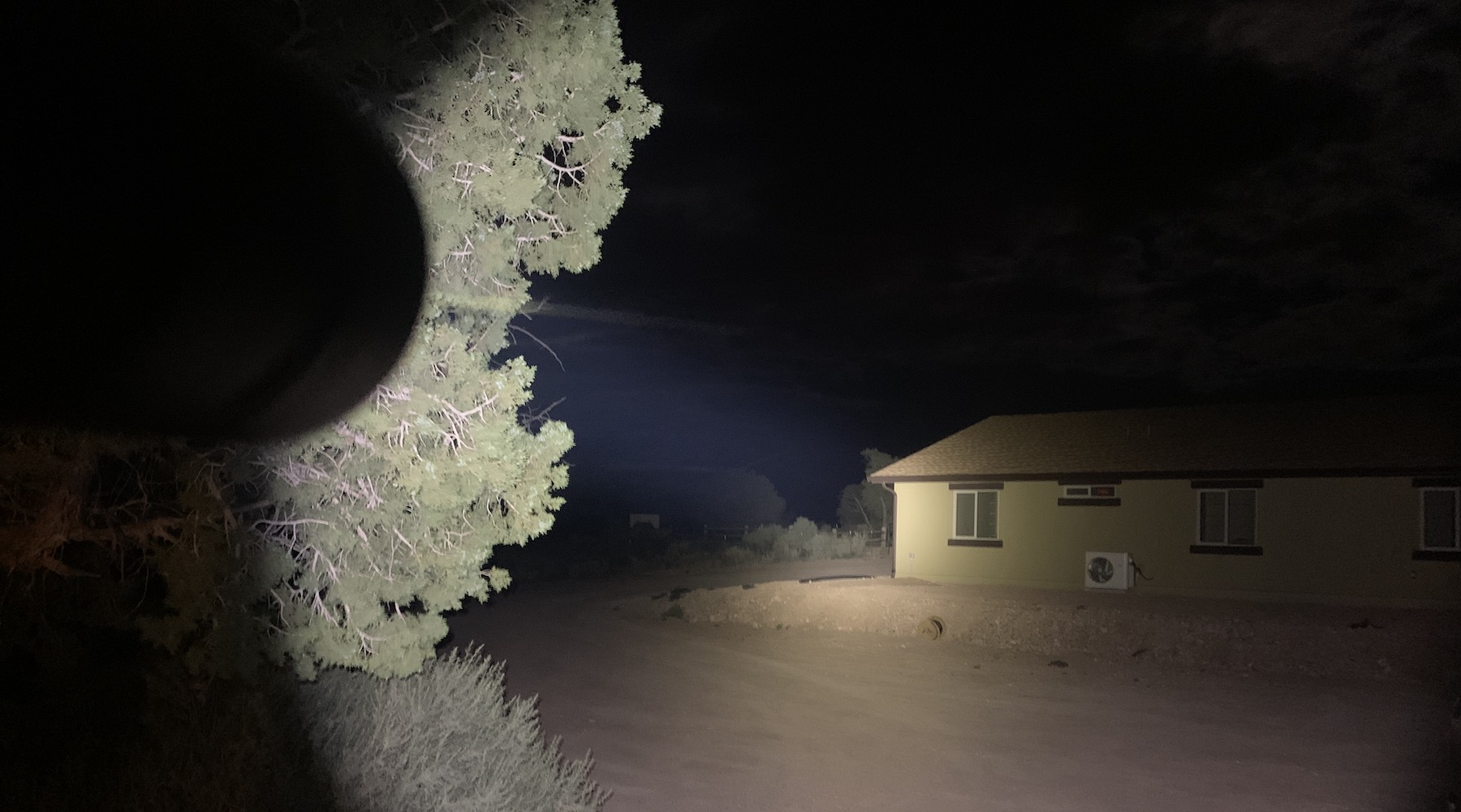
From the porch of the old Gunsite gatehouse, past the new one, and towards the gate – with the Duty light.
The Company Itself
A bit over five years ago, the average end user of handheld and weapon-mounted lights had a choice between products from two manufacturers – Streamlight and Surefire. And like many end users back then, I had a fair amount of lights from both companies.
Around the 2018 Shooting, Hunting, and Outdoor Trade (SHOT) Show, another company appeared on the radar. Cloud Defensive, from Indiana.
Their first product I saw was the Optimized Weapon Light, a purpose-built white light for a patrol rifle or home defense carbine with a built-in mount and switching. I had one of the early pre-orders. That light has served me well, and it will continue to. CD even made a railed forearm that was specifically designed for their OWL. If you are looking for a long gun light – carbine or shotgun – there is a future article on CD’s REIN 3.0 weapon light.
RESOURCES:


